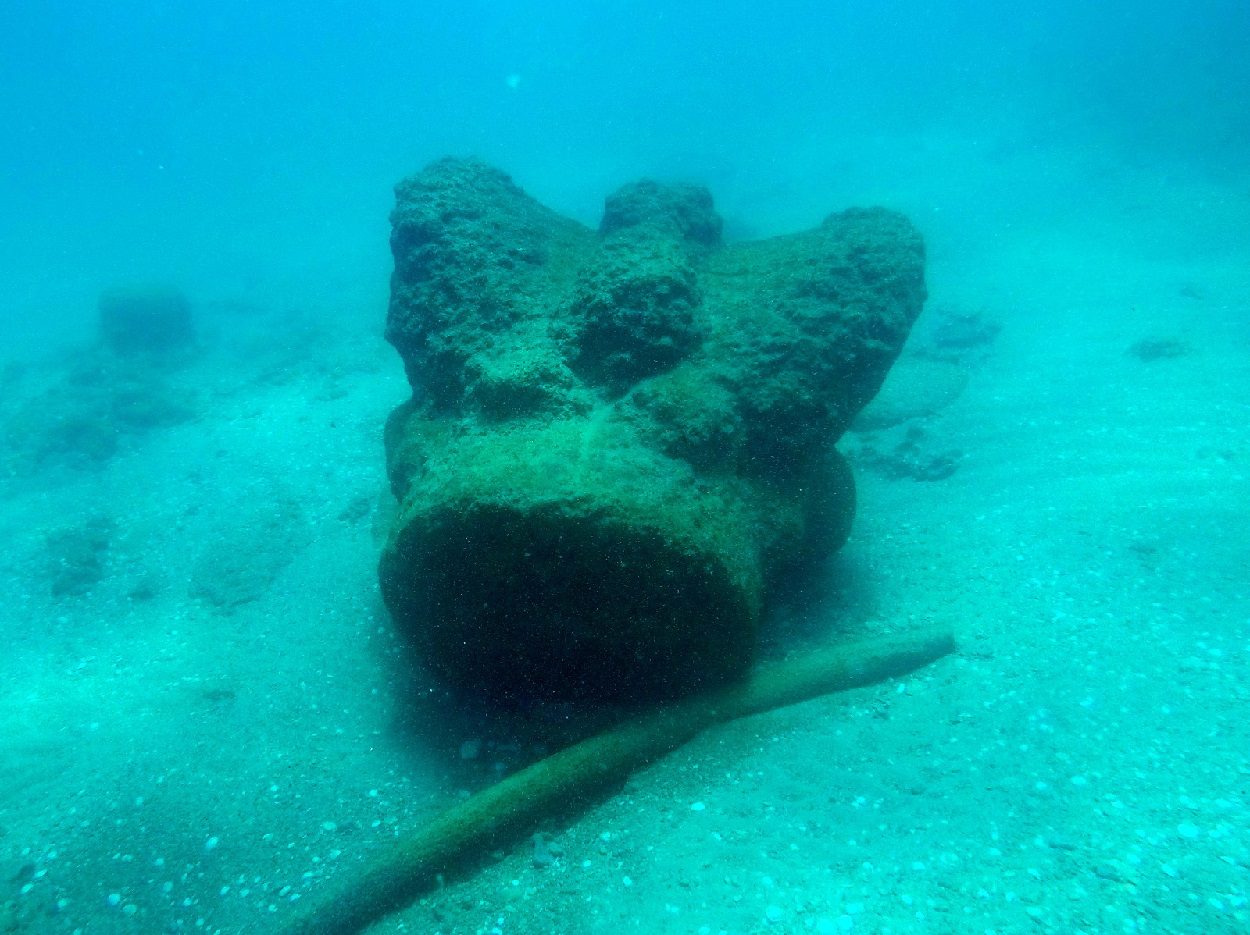A shipwreck that sank 1,800-years-ago off the coast of Moshav Beit Yanai in central Israel has been discovered containing ornate marble architectural pieces.
The location of the wreck site was first identified by Gideon Harris, who contacted the Israel Antiquities Authority reporting that he observed ancient columns on the seabed.
This led to an underwater survey, revealing Corinthian capitals decorated with vegetal motifs, partially carved capitals, and a huge marble architrave measuring up to 6 metres in length.
Koby Sharvit, Director of the underwater archaeology unit at the Israel Antiquities Authority. “We have been aware of the existence of this shipwrecked cargo for a long time,” he says, “but we didn’t know its exact whereabouts as it was covered over by sand, and we could therefore could not investigate it.”

“The recent storms must have exposed the cargo, and thanks to Gideon’s important report, we have been able to register its location, and carry out preliminary archaeological investigations, which will lead to a more in-depth research project,” added Sharvit.
Archaeologists suggest that the marble was destined for a high-status public building such as a temple or theatre, however, it is evident that the ship encountered a storm in shallow waters and dropped anchor in an attempt to prevent the ship from grounding.

“Such storms often blow up suddenly along the country’s coast,” says Sharvit, “and due to the ships’ limited manoeuvring potential, they are often dragged into the shallow waters and shipwrecked.”
The ship probably came from the Aegean or Black Sea region in Turkey or Greece, and was likely destined for one of the ports along the southern Levantine coast, Ashkelon or Gaza, or possibly even Alexandria in Egypt.

The discovery has settled a long-debated argument on whether the Romans imported architectural elements that were completely worked in their lands of origin, or whether they were transported in a partially carved form and were carved and fashioned at their site of destination.
Gideon Harris has been awarded a certificate of appreciation for good citizenship. According to Eli Escusido, Director of the Israel Antiquities Authority, “Gideon’s report epitomises the value of a citizen’s awareness regarding antiquities, and even more the importance of reporting them to the Israel Antiquities Authority.”
Header Image Credit : Israel Antiquities Authority





